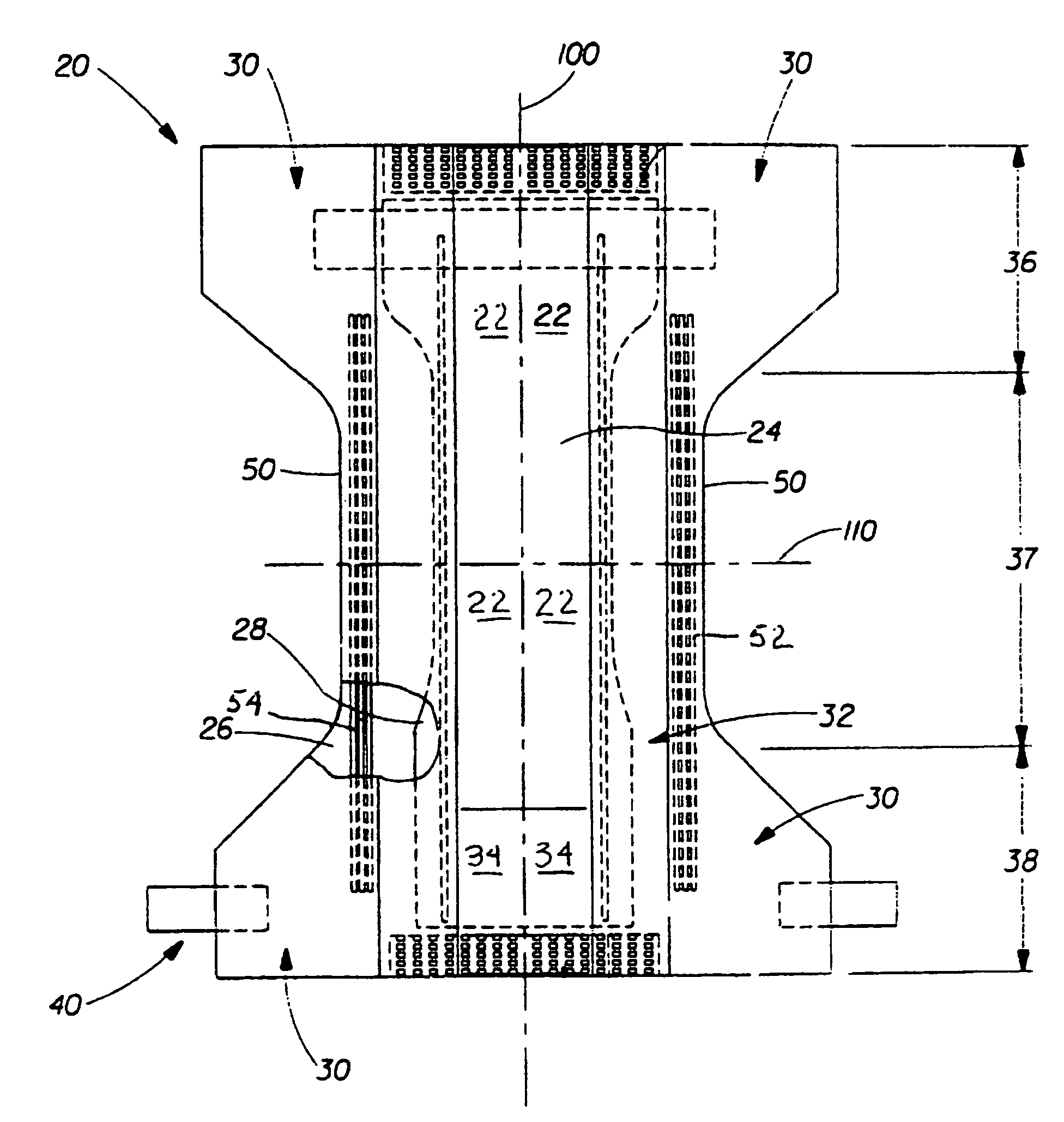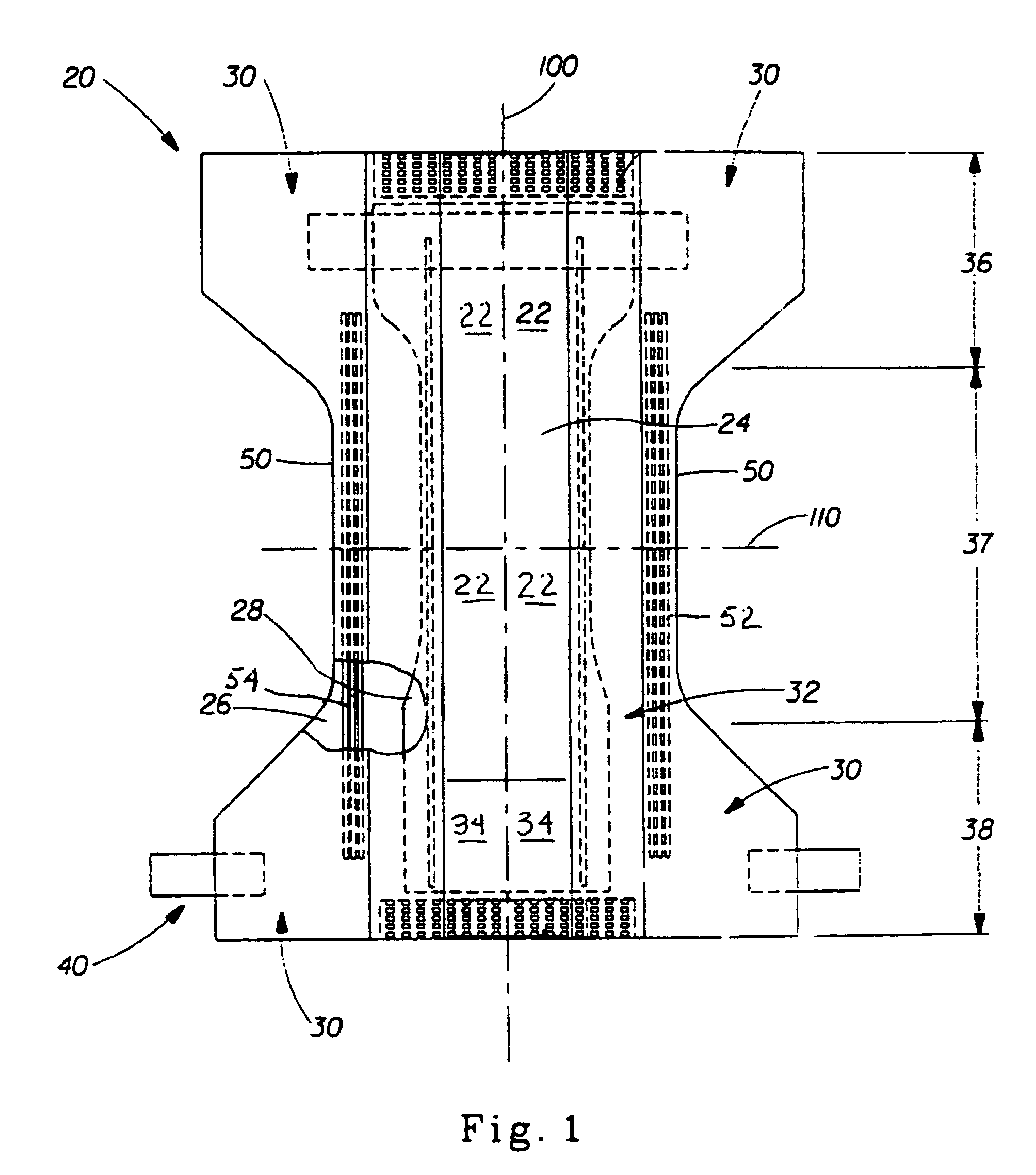Systems providing antimicrobial activity to an environment
a technology of environment and antimicrobial activity, applied in the direction of biocide, disinfection, drug composition, etc., can solve the problems of inadequate land treatment methods, huge excavation and reburial costs of even moderate-sized tracts of contaminated soil, and leakage of properly designed and operated state-of-the-art landfills
- Summary
- Abstract
- Description
- Claims
- Application Information
AI Technical Summary
Benefits of technology
Problems solved by technology
Method used
Image
Examples
example 1
[0104]In a first experiment, a natural sample from Santa Monica beach was user. This soil sample was taken from an area close to a storm drain. Concentrations started at 1100 MPN enterococci per 100 gram sediment were used. Wash samples having a concentration of greater than 10 parts per million were used on the soil samples. Enterocci concentrations approached zero for all of five consecutive washes. A longer term experiment was then performed with sand dosed with a pure culture of enterococci, the >10 ppm iodine solution imbibed in the soil, and then autoclaving. The bacterial level started at 1050 MPN / 100 g, and went to zero immediately upon treatment. This was clearly evidenced in five washes (all zero). Two samples were treated with >10 ppm iodine solutions and left to sit on the roof for several days. The bacterial levels were approximately zero at the end of the experiment. Samples that were imbibed with the >10 ppm solution and the sand raked, had bacterial levels that decre...
example 2
Prophetic
[0105]Particles of KI would be impact coated with smaller particles ( 1 / 10 to ⅕ diameter ratio) of polyvinyl alcohol in accordance with the teachings of the processes and equipment shown in U.S. Pat. No. 6,037,019 (Kooyer). These PVA coated particles could then be mixed with particles of cupric sulfate with no concern for any immediate reaction between the salts, even in the presence of ambient moisture.
[0106]The activity of the materials may be increased with respect to halogen releasing ability and volume by adding further halogen releasing components, especially iodates, chlorates, bromates, periodates, perchlorates and / or perbromates as a further reagent (e.g., as above 0% oe 0.5% to 200% by weight of the further halogen-releasing components to KI. Metal, non-metal, alkaline and alkali halogens compounds may be used.
[0107]The treatment may include use on mass water treatment (ponds or small lakes), continuous water treatment (in an enclosed flow stream where contact can...
example 3
Partial Prophetic
[0110]In a partial prophetic example, particles of KI were actually blended with 5% by weight Cab-O—Sil™ TG 709F hydrophobic fumed silica and blended together for a minimum of 30 seconds. This caused a layer of hydrophobic silica stand off particles to form a discontinuous layer on the KI surface. Old Bridge Chemicals CuSO4 pentahydrate powder was also used but not treated with silica. Raw materials were mixed in the following ratio of 14.3 wt % active CuSO4 and 85.7 wt % active KI. Upon intimate mixing this mixture does not show any discoloration or indication of reaction (iodine release) upon storage in 100% RH environment despite the close proximity of the intimately blended chemical reagent particles.
[0111]This mixture of reagents prophetically would be carried to a water drainage system site, the biofilm coating on the interior surface of the water drainage system, rain runoff pipe disrupted and the particles contemporaneously sprayed onto the interior disrupte...
PUM
| Property | Measurement | Unit |
|---|---|---|
| pH | aaaaa | aaaaa |
| diameter | aaaaa | aaaaa |
| diameter | aaaaa | aaaaa |
Abstract
Description
Claims
Application Information
 Login to View More
Login to View More - R&D
- Intellectual Property
- Life Sciences
- Materials
- Tech Scout
- Unparalleled Data Quality
- Higher Quality Content
- 60% Fewer Hallucinations
Browse by: Latest US Patents, China's latest patents, Technical Efficacy Thesaurus, Application Domain, Technology Topic, Popular Technical Reports.
© 2025 PatSnap. All rights reserved.Legal|Privacy policy|Modern Slavery Act Transparency Statement|Sitemap|About US| Contact US: help@patsnap.com


